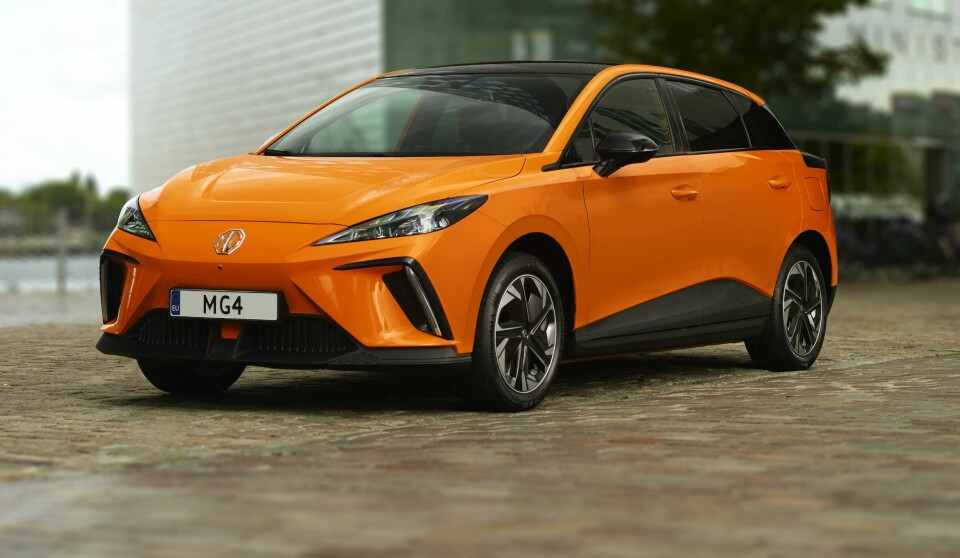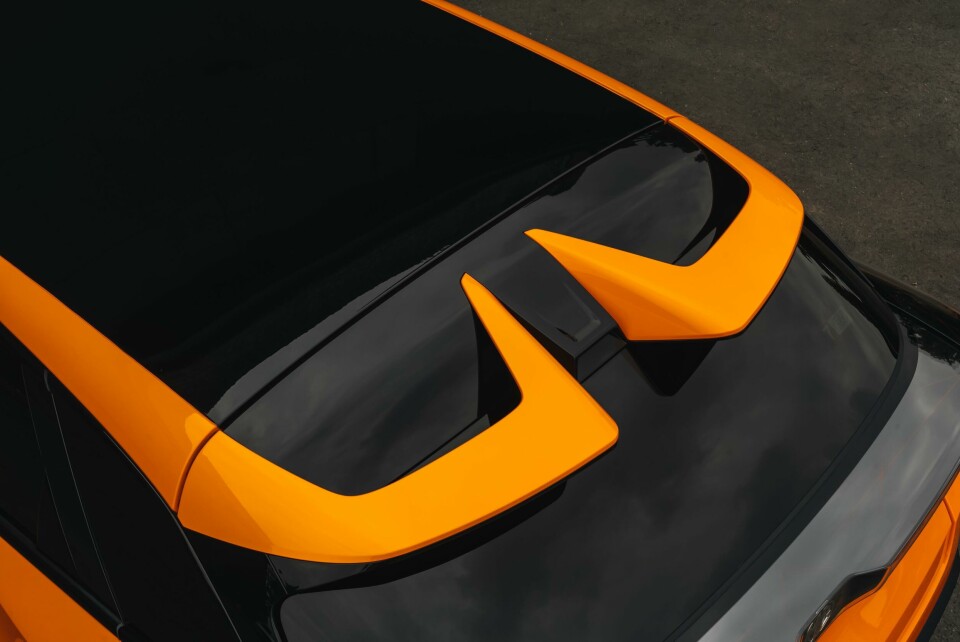
MG adds bold new EV to line-up
The MG4 is the brand’s first EV to be built on parent company SAIC’s modular scalable platform – and brings a dramatic new look to the table
Following an initial teaser in July and confirmed specifications in September, the MG4 EV has officially been launched in Europe. The compact electric hatchback will be the first to be built on SAIC Motor’s modular scalable platform (MSP), which MG says has brought a range of benefits in terms of packaging and performance.
Designed as part of a collaboration between SAIC’s Shanghai design centre and advanced studio in London – along with the Royal College of Art – the MG4 debuts a dramatic new look for the brand. Angular and modern, there are a handful of surprising elements – although these are mainly reserved for the top trim level.
Most eye-catching is the spilt “dual-wing” roof spoiler which is perhaps even more dramatic than that of the Lotus Eletre’s. At the front, an active grille shutter system improves aerodynamics at motorway speeds and boosts range but is only available with long range battery variants. It is more of a sculpted front end than we have seen on other EVs in the same class, with aggressive intakes and a pronounced snout that avoids a smooth, pebble-like front mask. A two-tone roof flows into that rear spoiler, with a crosshatched lightbar-taillight combo adorning the rear mask.
“It represents a bold new direction in terms of design,” said David Allison, head of product and planning at MG Motor UK, during the reveal. “It is completely different to anything we’ve seen before. It is modern, contemporary and high tech.”
“The MG4 is a disruptor for us”
At 4.28m long, 1.83m wide and 1.5m tall, the MG4 fits the mould of a conventional five-door hatchback. Allison is keen to avoid a firm label, suggesting it is “either a large B segment car, or small C segment car.” In any case, the benefits of the MSP platform mean it can better utilise the footprint available, sporting a much longer wheelbase than would otherwise be expected. At 2705mm, that wheelbase is just 15mm shorter than the HS SUV, which is more than 300mm longer from nose to tail. “The MG4 is significant for us, because it’s the first on this new platform and takes us into an area of the market we haven’t operated in before. It’s a disruptor for us,” says Allison.
This is becoming a common trend with dedicated BEV platforms, which allow the wheels to be pushed further out into the corners of the vehicle and interior space expanded. While the 17-inch aero-optimised ‘Tomahawk’ wheels do reduce drag, they are a little dinky in this writer’s opinion; not quite the caster-wheels-under-sofa look, but certainly undersized for the MG4’s frame. All things considered, it is indeed a bold new look for the brand.

There are other benefits to the MSP platform, including 50/50 weight distribution and the ability to support multiple battery capacities. Initially, there will be two options: a 50kwh standard range, and 64kwh long range. The long range battery offers 150KW of power, 250nm of torque, and 0-62 in “a shade under 8 seconds” – 7.7 to be precise. Importantly, the long-range battery is also available on the lower spec SE variant, supposedly offering 281 miles on the combined WLTP cycle (real world EV driving tends to bring different figures – watch this space.) The long-range battery also offers an 80% charge in around 35 minutes, although this will only be achievable on ultra-fast public charging stations (and come at a not insignificant cost.)
Inside and there is more change, with a floating centre console that houses a rotary gear selector and a storage tray for smartphones or other trinkets, but also a wireless charging pad. There are two handy holes to support two USB cables that keep things nice and tidy should devices be plugged-in old school. The user interface is led by two screens but they are not overpowering. A configurable 7-inch display sits directly in the driver’s eyeline, while a 10.5 inch widescreen serves up infotainment, navigation and other common functions. This can display up to five different menus at one time if needed. And praise be – there are buttons. Physical buttons. Hard piano keys below the screen serve as shortcuts to things like ventilation, hazard lights and volume control, all things that drivers do not want to be fumbling for while hurtling down the road.
“Tech is a word we’ll be using a lot with this car”
That being said, Allison was keen to show that the screen is straightforward to use, heading into the menu to adjust ventilation – a common bug bear with touch screens which often requires multiple swipes and taps. There is no conventional stop/start button; you sit in the driver’s seat and the car recognises the key. Depressing the brake pedal places the car in ‘ready’ mode. “The interior is contemporary, usable and minimalist, but very high tech,” says Allison, “and tech is a word we’ll be using a lot with this car.”
Building on the basic connectivity services expected of a modern car, including voice control and an accompanying smartphone app, the MG4 is part of a new breed of vehicles that can be used to power external devices using the car’s battery. Hyundai was one of the first to offer this with the Ioniq 5, and it appears this may become a new standard for BEVs. “And that’s offered as standard,” noted Allison. “This is truly the car that will represent a bold, exciting new direction for us.”
Hosted on Vimeo, one of the less interactive platforms out there, the digital reveal of the MG4 consisted of a beautifully curated PR video but gave no opportunity for the motoring press to dig any deeper into what is a striking new direction for the brand. It is unclear where the inspiration for that impressive split rear spoiler came from (available on top trim level only, I’m afraid), and the new user interface with floating centre console is, we assume, a conscious effort to improve the human-machine interaction. The crosshatched rear lights also signal a more experimental design language than before, more common on models in the premium segment than an “attainable” family hatch. There will no doubt me more to come, but perhaps a missed opportunity to engage in further discussions.
MG says that by 2025 its portfolio will count ten models across different segments, spanning A segment vehicles to dedicated sports cars – opening the door for a production variant of the Cyberster concept, perhaps.












